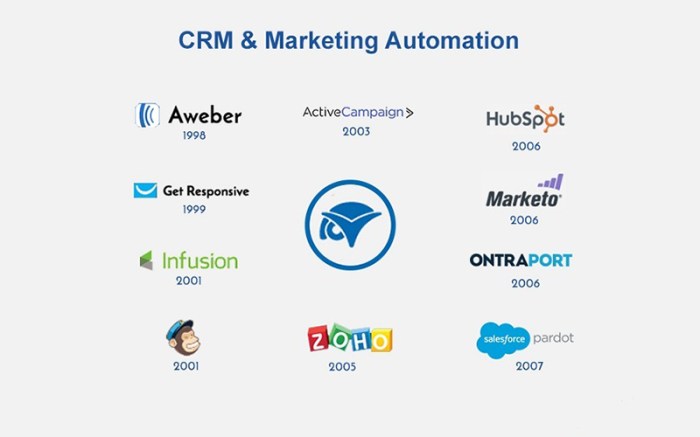Marketing automation tools are transforming the way businesses engage with their audiences, streamline operations, and drive growth. As digital marketing continues to evolve, these tools have become essential for companies seeking to enhance their strategies efficiently. This overview delves into the significance, functionalities, and evolution of marketing automation tools, highlighting their role in modern marketing landscapes.
From email marketing to customer relationship management (CRM) and social media, the variety of marketing automation tools available today offers unique features that cater to different business needs. Understanding these tools not only helps companies grow but also empowers them to make data-driven decisions and improve overall efficiency in their operations.
Introduction to Marketing Automation Tools
Marketing automation tools are essential components of modern marketing strategies, enabling businesses to streamline their marketing efforts and enhance customer engagement. These tools automate repetitive tasks, allowing marketers to focus on strategic initiatives. Over the years, the evolution of marketing automation has seen significant advancements, transitioning from basic email scheduling to sophisticated platforms that integrate multiple channels and data analytics. The main functionalities of these tools include campaign management, customer relationship management (CRM), email marketing, lead scoring, and analytics reporting.
Types of Marketing Automation Tools
Marketing automation tools can be categorized into several types, each serving distinct purposes within the marketing landscape. Understanding these categories helps businesses choose the right tools for their needs.
- Email Marketing Tools: These are designed to automate email campaigns, segment audiences, and personalize messaging. Popular examples include Mailchimp and Constant Contact, known for their user-friendly interfaces and robust analytics.
- Customer Relationship Management (CRM) Tools: CRMs like HubSpot and Salesforce help manage customer interactions and data throughout the customer lifecycle. They often integrate with other marketing automation tools to provide a comprehensive view of customer behavior.
- Social Media Automation Tools: Platforms such as Hootsuite and Buffer automate the scheduling and publishing of social media posts, helping businesses maintain an active online presence without constant manual effort.
Benefits of Using Marketing Automation Tools
Implementing marketing automation tools offers numerous advantages for businesses looking to enhance their marketing efficiency. These tools significantly improve productivity by automating routine tasks, allowing teams to allocate resources to more strategic initiatives.
Statistics reveal that businesses utilizing marketing automation experience a 14.5% increase in sales productivity and a 12.2% reduction in marketing overhead.
Successful outcomes from automation can be illustrated through case studies, such as companies that have seen increased lead conversion rates and enhanced customer engagement through targeted campaigns.
Key Features to Look for in Marketing Automation Tools

When selecting a marketing automation tool, businesses should consider essential features that enhance usability and effectiveness.
- User-Friendliness: The tool should have an intuitive interface that allows users to navigate easily and execute tasks without extensive training.
- Integration Capabilities: A good marketing automation tool should integrate seamlessly with existing systems, including CRMs, analytics tools, and e-commerce platforms.
- Analytics and Reporting: The ability to track campaign performance and generate detailed reports is crucial for measuring success and making informed decisions.
Examples of tools that excel in these features include HubSpot for its comprehensive CRM integration and Mailchimp for its user-friendly email marketing platform.
Best Practices for Implementing Marketing Automation Tools
Adopting marketing automation tools in an organization requires a systematic approach to ensure successful implementation. The following best practices can guide businesses through this process:
- Set Clear Objectives: Define what you aim to achieve with marketing automation, such as increasing leads or improving customer retention.
- Choose the Right Tool: Evaluate various tools based on your objectives and the features they offer.
- Provide Training: Equip your marketing team with the necessary training to effectively utilize the chosen tools.
- Monitor and Optimize: Regularly review performance metrics and make adjustments to improve campaign effectiveness.
Common pitfalls to avoid include neglecting data quality and failing to align automation strategies with overall business goals.
Measuring the Success of Marketing Automation Tools
To determine the effectiveness of marketing automation tools, businesses should track key performance indicators (KPIs) such as conversion rates, customer engagement levels, and return on investment (ROI).
Methods for analyzing data include using A/B testing to assess the impact of different campaigns and utilizing analytics dashboards to gain insights into customer behavior. Case studies highlighting measurable success reveal that companies that leverage marketing automation can see significant improvements in customer acquisition and retention rates.
Future Trends in Marketing Automation

The marketing automation landscape is evolving with emerging trends and technologies that promise to enhance operational efficiency. One significant trend is the integration of artificial intelligence and machine learning, which can provide predictive analytics and personalized customer experiences.
Businesses can leverage these advancements by adopting tools that incorporate AI capabilities, allowing for more accurate targeting and refined marketing strategies. The potential impact of these technologies is profound, paving the way for more responsive and adaptive marketing approaches.
Challenges and Solutions in Marketing Automation

While marketing automation tools offer numerous benefits, businesses often encounter challenges during implementation and use. Common issues include data integration difficulties, resistance to change from team members, and navigating complex software functionalities.
Strategies to overcome these challenges include investing in adequate training, ensuring stakeholder buy-in, and starting with a phased implementation approach to minimize disruption. Companies like Adobe and Marketo have successfully navigated these obstacles by focusing on collaboration and continuous improvement in their automation strategies.
Closing Summary: Marketing Automation Tools
In conclusion, marketing automation tools are not just a trend; they are a necessity for businesses aiming for sustained success in a competitive environment. By implementing the right tools and best practices, companies can optimize their marketing efforts, measure their impact, and adapt to future trends, ensuring they stay ahead of the curve. Embracing these technologies positions businesses to harness the full potential of their marketing strategies.
